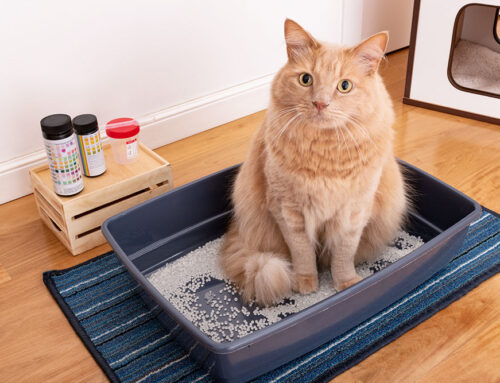Separation Anxiety in Dogs: Effective Strategies from Cobb & Co. Veterinary Clinic
Understanding Separation Anxiety in Dogs
What is Separation Anxiety?
Separation anxiety in dogs manifests as a range of behavioral signs when they are left alone or separated from their handlers. Common symptoms include excessive barking, whining, pacing, destructive behavior, and inappropriate elimination. Some dogs may also show less obvious signs such as drooling or increased lethargy before a known separation. This condition often stems from a hyper-attachment to their owners and a lack of confidence or ability to cope alone.
For more insights, you can read this article by the ASPCA on Separation Anxiety in Dogs.
Causes of Separation Anxiety in Dogs
The reasons behind separation anxiety can be complex, involving genetic predisposition, environmental factors, and past experiences. Dogs that have been rehomed or experienced loss can develop anxiety, as can those who lack a stable routine or have undergone traumatic separations in the past.
From a veterinary standpoint, understanding the root cause is crucial for effective treatment. Genetic predispositions can be harder to manage, but knowing a dog’s history can help in tailoring a treatment plan. Environmental factors, such as changes in household dynamics or moving to a new home, can also trigger anxiety and should be carefully managed to mitigate their impact.
Diagnosing Separation Anxiety
When to Consult a Veterinarian
It’s crucial to consult a veterinarian if your dog shows consistent signs of distress when alone. Professional input is necessary to distinguish between separation anxiety and possible underlying health issues, which can sometimes present with similar symptoms. Early intervention is key to preventing the progression of the disorder and avoiding the escalation of symptoms into more severe behavioral issues.
For more information, read Separation Anxiety in Dogs – ASPCA.
What to Expect During the Visit
During your visit to Cobb & Co. Veterinary Clinic, our team will conduct a thorough behavioral assessment and may recommend medical tests to rule out other conditions. Our goal is to provide a comprehensive understanding of your dog’s health and behavior to create a personalized treatment plan. Learn more about our dedicated team here.
Treatment and Management of Separation Anxiety
Behavioral Modifications
Modifying behavior is a cornerstone of treating separation anxiety. Techniques include:
Gradual desensitization to being alone: This involves leaving your dog alone for short periods and gradually increasing the duration as they become more comfortable.
- Establishing a reliable daily routine: Consistent feeding, walking, and playtime schedules can provide stability and reduce anxiety.
- Providing engaging toys and activities that keep them busy when alone: Puzzle toys, treat dispensers, and safe chew toys can distract your dog and provide mental stimulation.
For a deeper dive into how we can guide you through these modifications, visit our Behavioral Counseling page.
Medical Treatments
In some cases, medication may be necessary to help manage your dog’s anxiety in conjunction with training. These medications, such as selective serotonin reuptake inhibitors (SSRIs) or tricyclic antidepressants, can reduce the overall stress level, making it easier for the dog to learn new coping mechanisms. It’s important for pet owners to understand that medications are not a cure but a part of a comprehensive treatment plan. Regular follow-ups are essential to adjust dosages and monitor side effects.
Supportive Therapies and Supplements
Alongside behavioral and medical treatments, certain supplements and pheromone diffusers can provide additional support by promoting a calming environment for your dog. Products like Adaptil diffusers release synthetic pheromones that mimic those produced by nursing mothers, which can have a calming effect. Omega-3 fatty acids and other natural supplements may also support brain health and reduce anxiety. Diets and supplements can also help support health brain levels of needed neurochemicals.

Preventing Separation Anxiety in Dogs
Early Training and Socialization
To prevent separation anxiety, early socialization and training are key. They help to build confidence and reduce anxiety in various situations. Effective early training includes:
- Exposure to different environments and people: This helps dogs become adaptable and less fearful of new experiences.
- Positive reinforcement techniques that reward calm behavior: This encourages your dog to remain relaxed in potentially stressful situations.
Creating a calming space at home can significantly help dogs with anxiety. This includes:
- A dedicated quiet space for your dog to retreat: A comfortable crate or bed in a quiet part of the house can provide a sense of security.
- Comfort items such as chew toys and beds that can help soothe them: Familiar smells and textures can provide comfort and reduce stress.
Our team at Cobb & Co. Veterinary Clinic is here to provide support and personalized advice for your pet’s specific needs. We understand the emotional toll that separation anxiety can have on both pets and their owners, and we’re committed to finding the best solutions for your family. For more guidance, Contact Us today.
Want to learn more?
Check out Don’t Go! Separation Anxiety in Pets.
FAQ: Common Questions About Separation Anxiety
- Can separation anxiety in dogs be cured?
While separation anxiety can be effectively managed and minimized, it is often a chronic condition that requires ongoing attention. Early intervention and consistent treatment can lead to significant improvements. - How long does it take to see improvement in my dog’s separation anxiety?
Improvement timelines vary depending on the severity of the anxiety and the consistency of treatment. Some dogs may show progress in a few weeks, while others may require several months of dedicated effort. - What should I do if my dog has a separation anxiety emergency?
If your dog is experiencing severe symptoms, such as self-harm or extreme distress, contact your veterinarian immediately. In the meantime, try to calm your dog with familiar objects and a soothing environment.






Leave A Comment